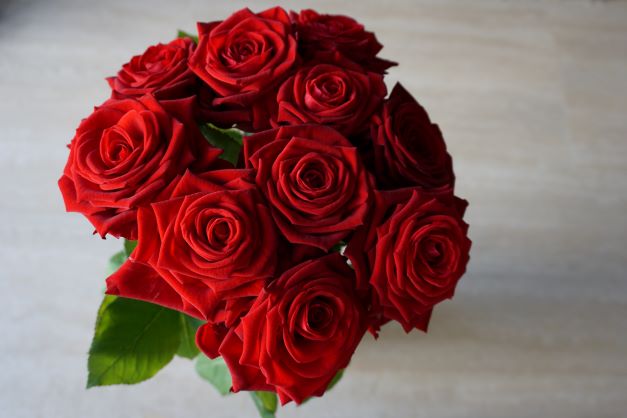Valentine’s Day Roses
Valentine’s Day roses are a tradition. Giving someone roses on Valentine’s Day is a sign of love and affection. However, it’s more than a dozen red roses. Valentine’s Day roses are red roses on cards, logos of a dozen red roses, and one more thing, a reminder that it’s time to start thinking about a Spring preparation plan for your rose bushes.
Valentine’s Day, February 14th, is only a few short weeks from the official start of Spring, March 20th. So, when you see all those roses on Valentine’s Day, it’s time to consider your rose bushes.
Spring Rose 4 -Step Prep
1. Clean
When there is zero chance of a nighttime freeze, it’s time to uncover your bushes and clean up the rose bed. Caution: Be aware of warm days in early Spring followed by freezing nights. If you’ve covered your bushes with cages of leaves or straw, tied them to canes and covered, or used heavy mulch, plan time to carefully uncover the bushes. You also want to clean all debris, such as fallen leaves and twigs, not only because it looks better but also because the debris promotes the growth of disease and pests.
2. Prune
Even if you pruned your rose bushes in the Fall, inspecting and pruning them in the Spring is a good idea. It’s best to prune before leaf bulbs open. Start by looking for dead stems and canes. Be sure to use a sharp cutting tool. I make small cuts and continue until I find green.
“Roses are best pruned before the new foliage emerges so that you can easily assess winter damage. Winter mulch and foam covers should be removed as soon as new growth becomes apparent.” — Purdue.edu Spring Pruning of Roses
3. Feed
A general all-purpose fertilizer works for me, although I have used compounds specialized for roses. Another feeding tip is using Epsom Salts. Yes, the same salts you soak in are good for your rose bushes.
“In general, magnesium plays a role in strengthening the plant cell walls, allowing the plant to take in the nutrients it needs. It also aids in seed germination, photosynthesis, and in the formation of fruits and seeds.” — Epsom salts
4. Spray
“It is important for homeowners to understand that susceptible roses require frequent fungicide applications (every 7-14 days on average) over the course of the summer. The key to successful chemical management is preventing infection. Fungicides registered for black spot control should be applied to susceptible roses first in the Spring before new leaves develop symptoms. Then, susceptible plants should receive regular fungicide applications every 7-14 days throughout the summer until the first frost to prevent infection.” — Diseases of Landscape Plants — Purdue Extension
Along with these 4 steps, monitoring your rose bushes’ water supply is essential. Insufficient water could damage all your other good work.
How Can We Help You?
Berger Hargis has a company philosophy of providing personal excellence for all our services. Our growth and success have been due entirely to our commitment to honest, excellent customer service. The company has been built on the referral business we have received due to this philosophy.
We work with residential customers and businesses in Central Indiana. If you have any questions about roses and other flowering bushes and shrubs, please don’t hesitate to Contact Us.
About the Author
Randy Clark is a speaker, coach, and author. He publishes a weekly blog at Randy Clark Leadership.com. Randy is passionate about social media, leadership development, and flower gardening. He’s a beer geek, and on weekends he can be found fronting the Rock & Roll band Under the Radar. He’s the proud father of two educators; he has four amazing grandchildren and a wife who dedicates her time to helping others. Randy is the author of the Amazon bestseller The New Manager’s Workbook, a crash course in effective management.
If you enjoyed this article, you might appreciate this post, 9-point Spring Lawn Care Checklist.
Photo by Sandra Wei on Unsplash
Go Back







